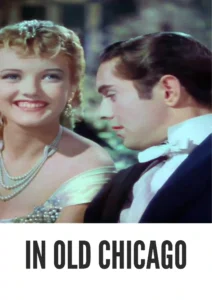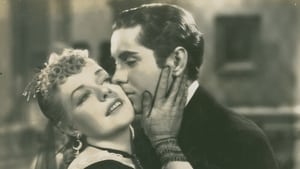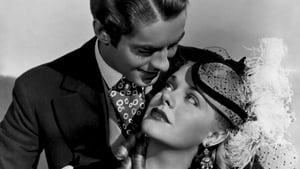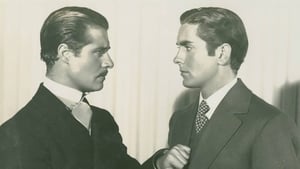Video Sources 0 Views
- Watch trailer
- In Old Chicago 1938 Colorized


Synopsis
Table of Contents
ToggleFlames of Love and Fury: Old Chicago (1938) A Colorized Historical Epic

Step back in time to the Windy City with Old Chicago, a spectacular historical drama from 1938, now brilliantly colorized for a breathtaking viewing experience. This film, starring Tyrone Power and Alice Faye, tells a sweeping saga of ambition, love, and destruction amidst the backdrop of the infamous Great Chicago Fire. Perfect for fans of classic cinema and historical epics, this HD download brings the grandeur and tragedy of old Chicago to life on your screen. Also known as In Old Chicago.
Old Chicago Storyline: A City Forged in Fire
Old Chicago chronicles the O’Leary family’s rise to power and prominence in the bustling city of Chicago during the late 19th century. Led by the ambitious Jack O’Leary (Tyrone Power), the family navigates the city’s treacherous political landscape and builds a powerful empire.As Jack’s ambitions grow, he becomes entangled in a web of corruption and rivalry, setting the stage for a dramatic confrontation with his brother, Bob (Don Ameche), a reform-minded lawyer. Meanwhile, the love story between Jack and Belle Fawcett (Alice Faye), a captivating saloon singer, adds depth and romance to the unfolding drama. The film culminates in the catastrophic Great Chicago Fire of 1871, which threatens to destroy everything the O’Leary family has built. Old Chicago is a gripping tale of ambition, love, and redemption set against the backdrop of one of history’s most devastating disasters.
Movie Cast
The film boasts a stellar cast of actors who bring this historical epic to life:
- Tyrone Power as Dion Patrick “Jack” O’Leary
- Alice Faye as Belle Fawcett
- Don Ameche as Bob O’Leary
- Alice Brady as Mrs. Molly O’Leary
- Andy Devine as Pickle Bixby
Movie Genre
Old Chicago falls into the genre of disaster romance, blending elements of historical drama, romance, and disaster to create a captivating and immersive cinematic experience. Its sweeping scope, compelling characters, and dramatic events make it a classic of the genre.
Historical Context: The Great Chicago Fire on Screen
Released in 1938, Old Chicago was a landmark achievement in Hollywood filmmaking, renowned for its lavish production values, epic scale, and dramatic recreation of the Great Chicago Fire. The film was produced during a time when historical dramas were gaining popularity, offering audiences a glimpse into the past while exploring universal themes of love, ambition, and redemption. Old Chicago remains a testament to the power of cinema to transport audiences to another time and place.
Colorization Details
This colorized version of Old Chicago has been meticulously restored using modern digital techniques, enhancing the visual appeal while preserving the film’s original grandeur and drama. The colorization process involved carefully analyzing the grayscale tones of the original black and white footage and assigning appropriate colors to each scene. While the specific software used remains proprietary, the techniques employed included advanced algorithms for color palette selection and image enhancement. This painstaking process brings new life to the characters and settings, making the story even more engaging for modern audiences.
Technical Details
- Director: Henry King
- Screenplay: Sonya Levien, Lamar Trotti
- Story: Niven Busch
- Cinematography: J. Peverell Marley
- Edited by: Barbara McLean
- Production Company: 20th Century Fox
- Distributed by: 20th Century Fox
- Runtime: 110 minutes
Technical Specifications
- Download Format: MP4
- Resolution: HD (1080p)
- Compatibility: Compatible with most devices, including smartphones, tablets, computers, and smart TVs.
Reviews and Critical Reception
Old Chicago (1938) was a box-office success and received critical acclaim for its epic scope, dramatic storytelling, and impressive special effects. The film was nominated for multiple Academy Awards, including Best Picture, and won two for Best Supporting Actress (Alice Brady) and Best Art Direction. Old Chicago remains a beloved classic of Hollywood’s Golden Age, celebrated for its historical accuracy and timeless themes.
FAQs
- Q: What is Old Chicago about?
- A: Old Chicago is a historical drama about the O’Leary family’s rise to power in Chicago and their struggle to survive the Great Chicago Fire.
- Q: Is Old Chicago (1938) based on a true story?
- A: While Old Chicago is based on historical events, it also incorporates fictional elements and characters to enhance the drama.
- Q: Is this version of Old Chicago colorized?
- A: Yes, this version has been professionally colorized to enhance the viewing experience.
- Q: What makes Old Chicago a classic film?
- A: Old Chicago is a classic film due to its epic scope, dramatic storytelling, and impressive recreation of historical events.
- Q: What is the download format?
- A: The download format is MP4, which is compatible with most devices.
- Q: What resolution is the download?
- A: The resolution is HD (1080p), providing a high-quality viewing experience.
Download Now in HD!
Experience the drama of Old Chicago Today!













